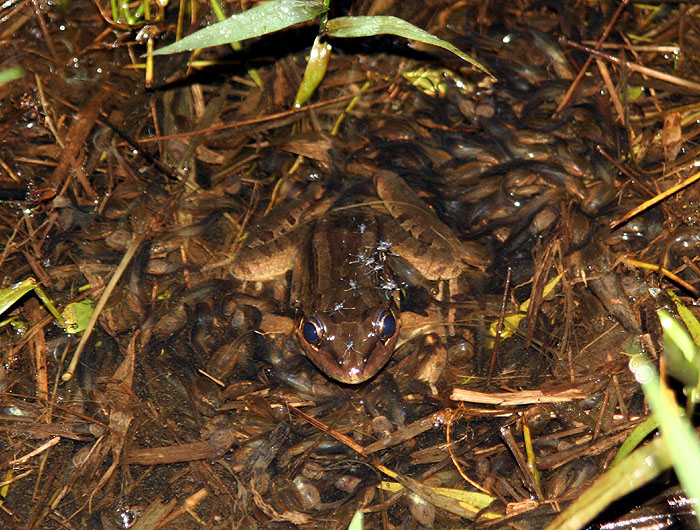
Tadpole Schooling and Parental Care in Leptodactylus insularum
For my doctoral disseration I will be examining
tadpole schooling and parental care in the frog, Leptodactylus insularum
in Gamboa, Panama. Females attend dense schools of tadpoles and lead them around
using a pumping behavior. Schooling behavior and parental care are usually studied
separately in anurans, and I hope to use L. insularum as a model species
to look at the interactions between tadpole schooling and parental care, as
well as parent-offspring communication. I also hope to untangle some of the
costs and benefits of tadpole schooling and female attendance to examine the
evolution of these unusual social behaviors. In the photo below, the female
in the
middle of the school has at least 11 mosquitoes biting her! That's a cost (that
I can relate to!)!

Natural History
Leptodactylus insularum in Gamboa,
Panama breed during the rainy season (May - Dec) in shallow, temporary ponds.
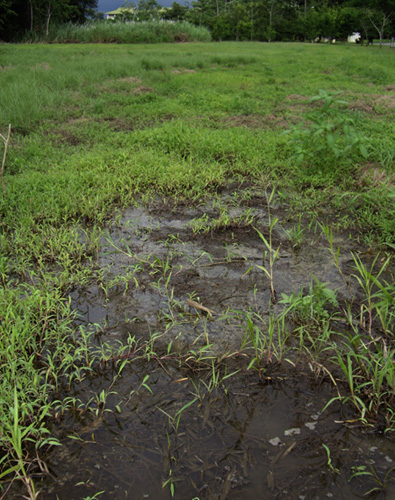
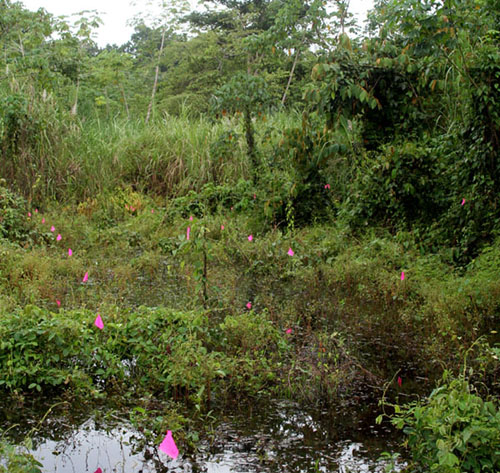
Male and female frogs are sexually dimorphic,
with males having huge forearms and chests and thumb spines.
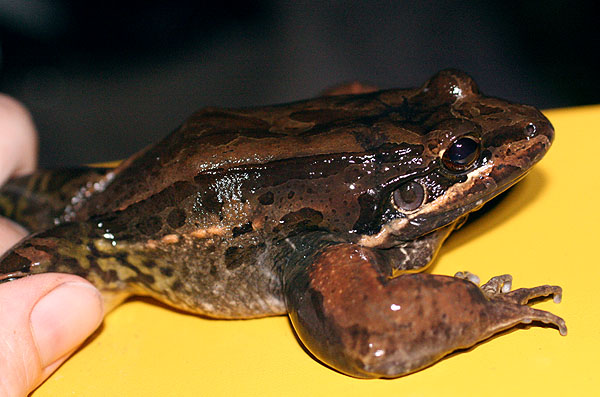
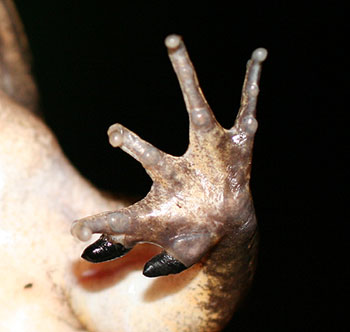
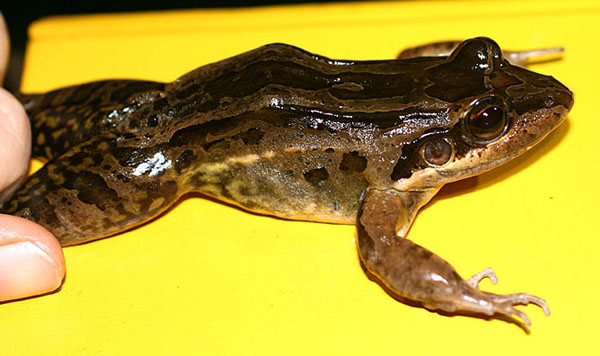
Males spread out within the pond and call
from underneath vegetation for females. I have yet to observe
amplexus, but the result is a foam nest with 5-8000 eggs. Females remain with
the foam nests and resulting
school of tadpoles. (Toothpick = 6cm)
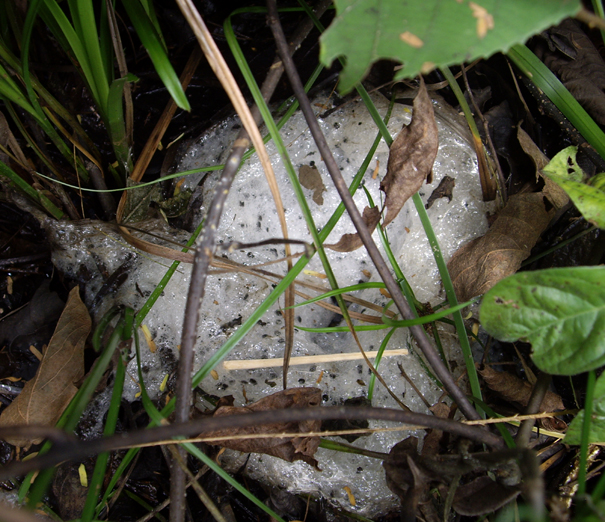
Tadpoles remain in dense schools throughout development,
and these schools are often attended by
females. I have not yet followed a school all the way until metamorphosis, but
the tadpoles are constantly
feeding, very active and reach metamorphosis in only 17 days! very quickly!
Here is a
metamorph that has it's adult coloration already!
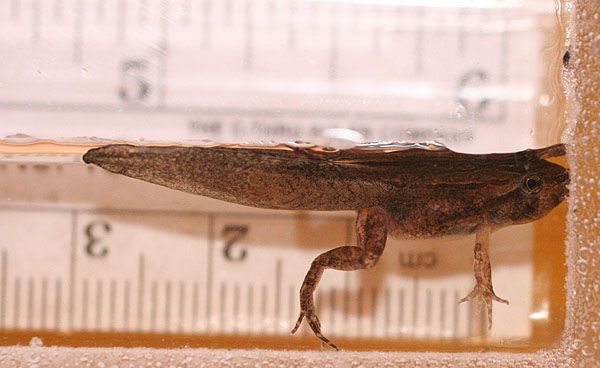
I am using Visual Implant AlphaNumeric tags (Northwest
Marine Technologies, Inc.) to
mark individuals. I've had good success with the marking, but it requires handling
of the frog for
identification. The tag in the photo below is from a recaptured female. You
can see that the tag healed
perfectly and is visible with just a flashlight. I also photograph individuals
so that I can identify them
without recapturing them nightly.
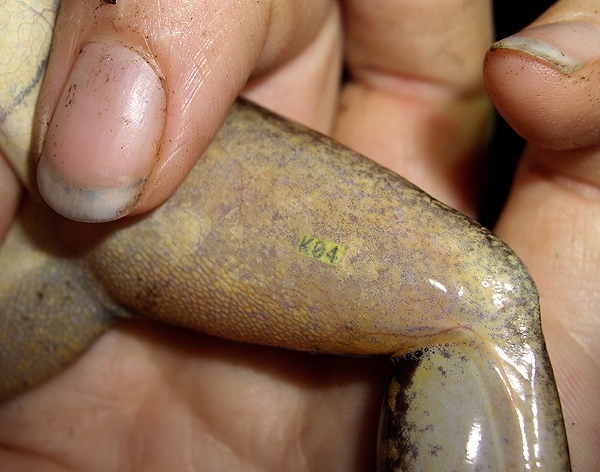
Tadpole Schooling
The tadpoles form very tight schools, which may
protect an individual from predation and allow
for increased activity levels, but it surely makes the
whole group very conspicuous. And
I think there must be increased competition for oxygen and food within these
dense schools!
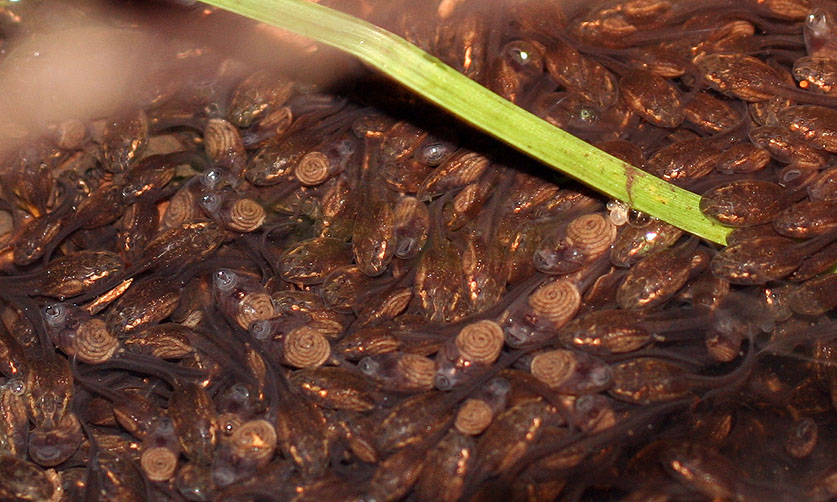
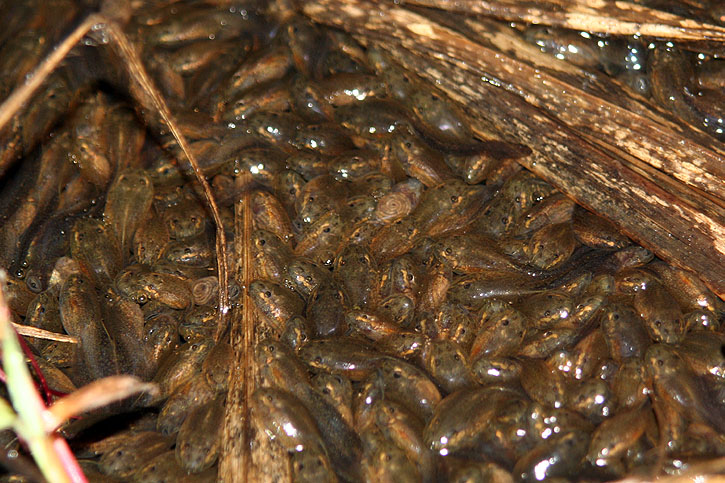
In some of the schools there are many different
sized tapoles schooling together. In the first photo
you can see a large tadpole that already has hind limbs and a medium sized tadpole
swimming amongst
the larger school of smaller tadpoles. Perhaps the tadpoles are all related
and just grow at incredibly
different rates? Or more likely is that larger tadpoles become separated from
their original schools and
school with any other L. insularum tadpoles they encounter? In the second
photo there seems to be 2
different aged schools mixed together (the pointer shows a smaller tadpole and
the toothpick is 6cm for
scale). I plan to look at paternity and determine if relatedness affects schooling
behavior and parental care.
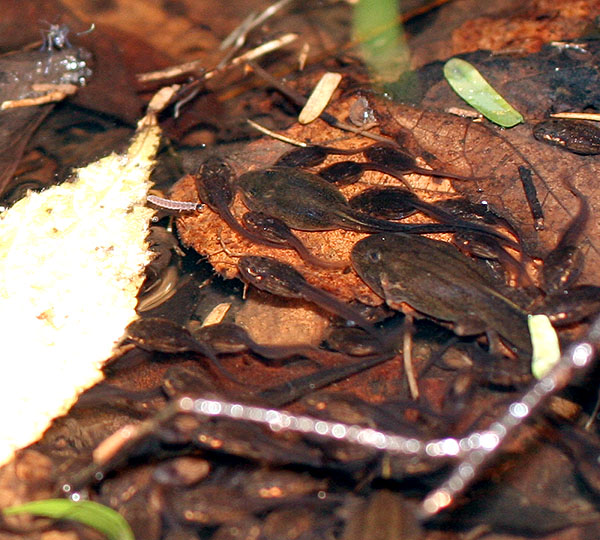
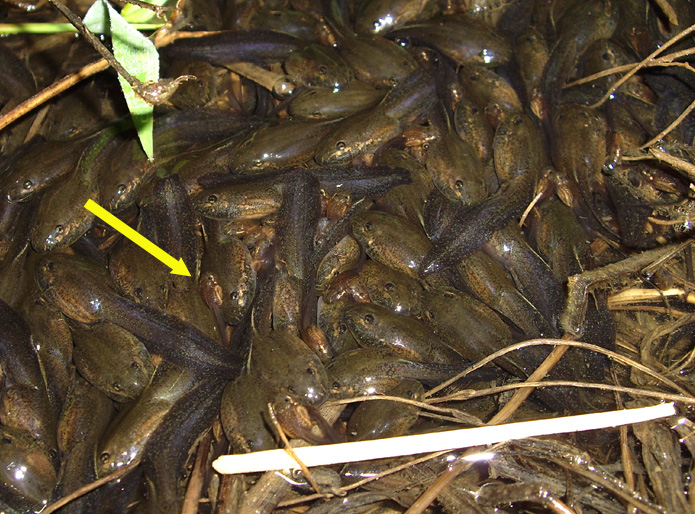
Clumping - Here is a video
of tadpoles showing a tendency to clump together.
They start out in a loose group and slowly start to clump until only the edges
have active tadpoles!
The toothpick (6cm) is perpendicular to the observer for scale.
I have also found stationary cohesive schools
where the middle is almost completely still! In the
school below, there was increased protection from predators
in the center (I saw an attack on a tadpole on
the outskirts), but I plan to look into the tradeoffs of these dense aggregations
(specifically
decreased oxygen availability) and how these costs change throughout development.
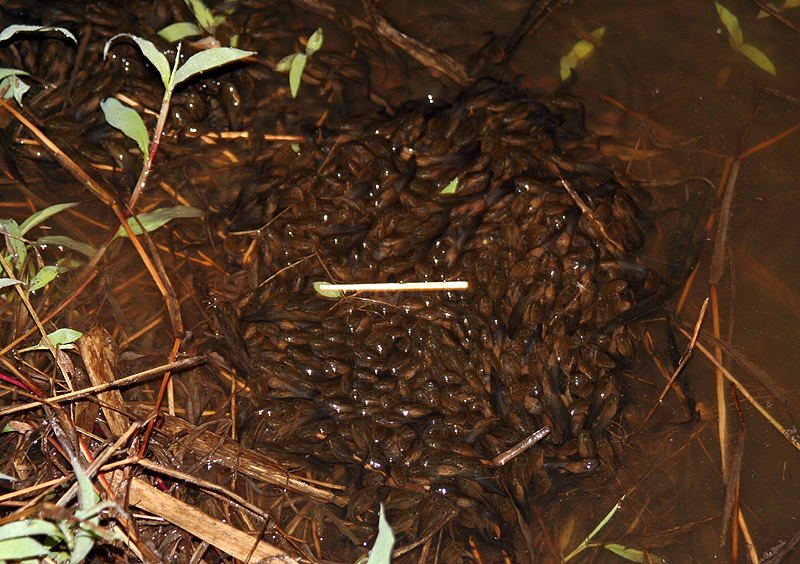
Schooling attracts attention
- Here is a video of a school
during the day. You can see how
conspicuous they are with the reflected sunlight. It certainly enabled me to
find them! But there must
be costs to being so visible (like attracting this tiger heron?). At the end
of the video, the tadpoles start clumping
towards the bottom of the screen. It seems as if they are swimming on top of
one another - perhaps they're
trying to get to the surface where oxygen is more available.
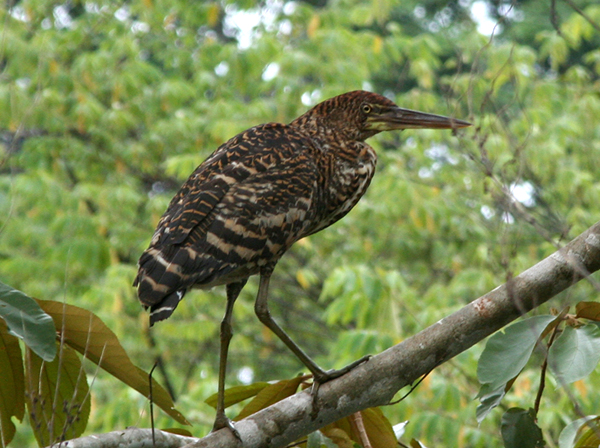
Bobbing for air
- In this video you can see older
tadpoles engaging in a bobbing behavior where they
sprint to the surface, (presumably) gulp air, and return to deeper water. They
swim very rapidly and I have
a very difficult time following individuals or even getting a sense of how dense
these schools are.
However, this is not a problem for the spiders, because I have observed successful
predation on the
tadpoles exhibiting this behavior. The behavior isn't found as dramatically
in younger tadpoles and I plan
to look at lung development to see if there is a physiological and behavioral
shift to encourage aerial respiration.
Female aggressive behavior
While trying to take the temperature of some
foam nests, the attending females very aggressively
kept me away! Here is a video
of two separate females attacking my hand. The first female grabbed my
hand with her forearms and the second head butted me. Both females made a grunting/hissing
noise with each
attack. You can also see some threat behavior where the females stand up on
all four legs or raise
their rear! Very exciting!!! What great mothers, I love them!
Spider Predation
During my observations, the most common predators
were spiders. I would find spiders hunting
over the school, and often after only a few attempts, grab very large tadpoles,
carry them out of
the water and feast on them for the next hour! crazy!! When this predation occurred,
I would see
no obvious reaction from the attending mother or other tadpoles. In fact, on
the night where I took
the following photo, I had 5 spiders eating tadpoles on the surface, and the
school remained in the
same location for mulitple hours. This amazing photo below
shows a Thaumasia spp. spider (in the
family Pisauridae, commonly called a Raft Spider, Fishing Spider or Nursery
Web Spider)
feasting on a Leptodactylus insularum tadpole.
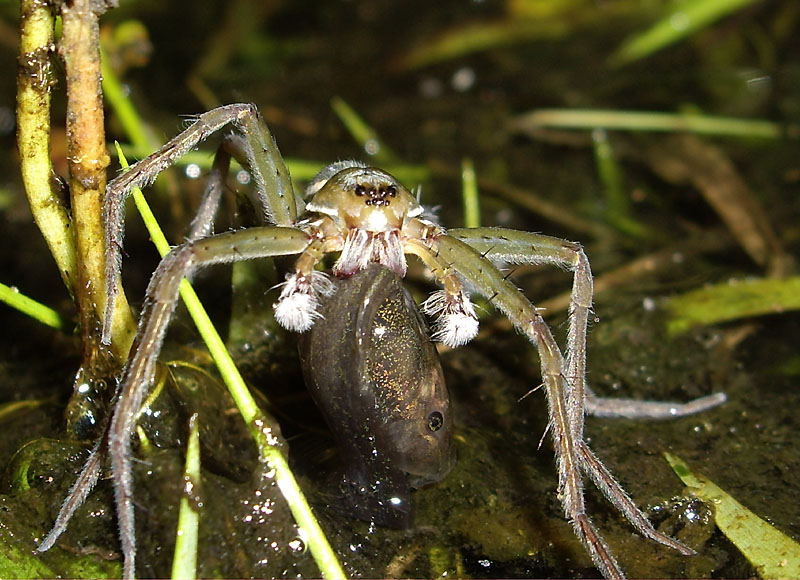
Spider predation and bouncing
- In this amazing video I
observed a fishing spider bouncing on
the surface of the water and producing concentric surface waves. The spider
then darted forward and caught
a tadpole (not L. insularum). Then with the tadpole the spider darted
forward again, dragged it onto some
vegetation, then darted away from me... right in the grasp of a larger nursery
web spider!!! So the big spider was
eating the small spider who was eating a tadpole! Just like the cartoons of
food chains in the ocean!
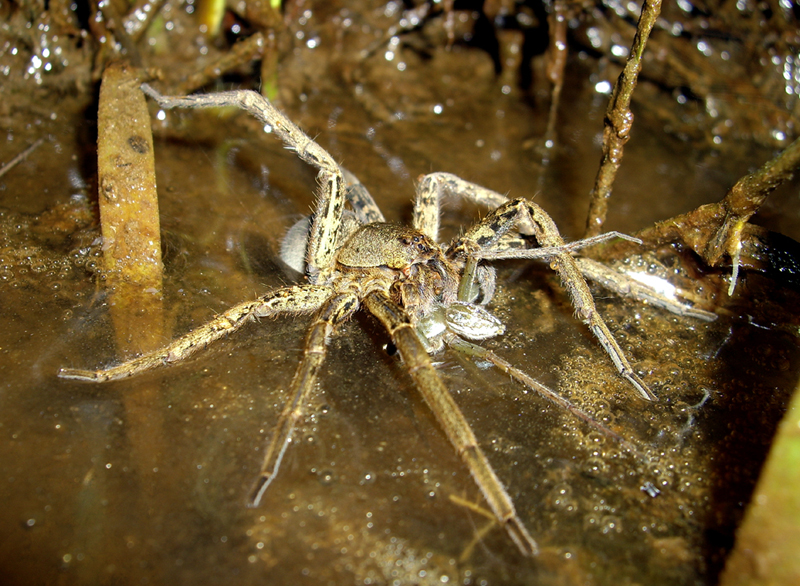
I also came across a larger spiders (ID?) sitting
next to a dead male tungara
frog. I can only assume that spider was a factor in the frog's death....
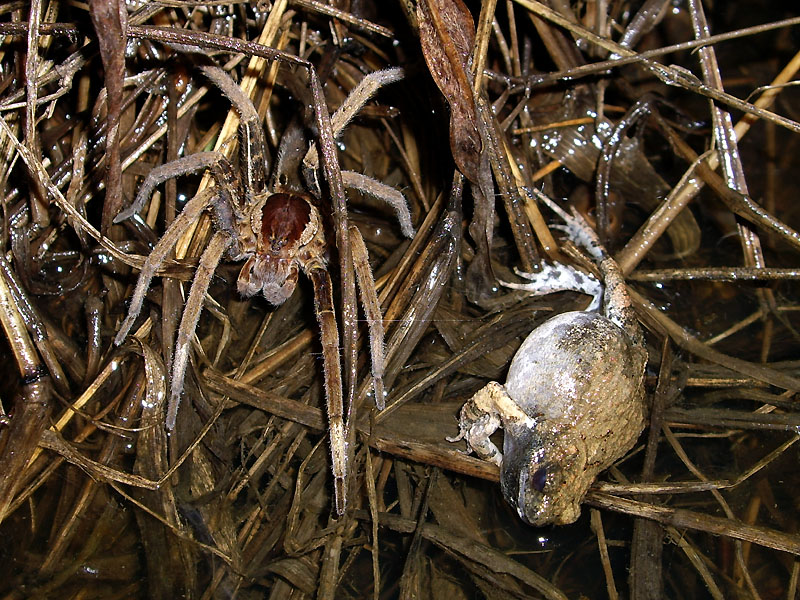
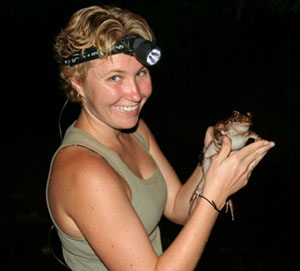 |
Kristiina Hurme, PhD Student |
Any comments or questions? Please email me at
Kristiina.Hurme@uconn.edu
All photos and video are property of Kristiina Hurme. Please do not use without
permission.
Visits since Oct. 20, 2007